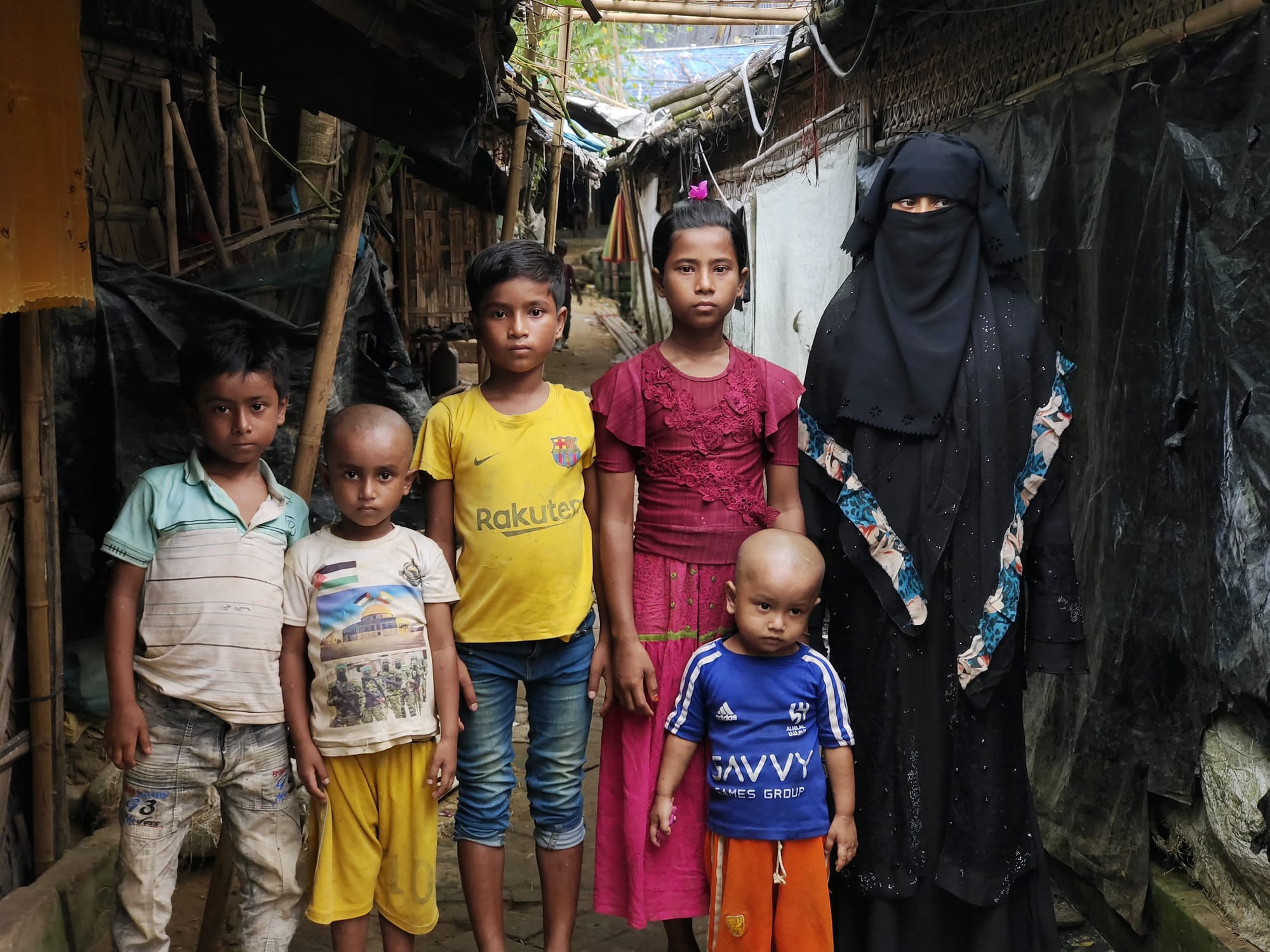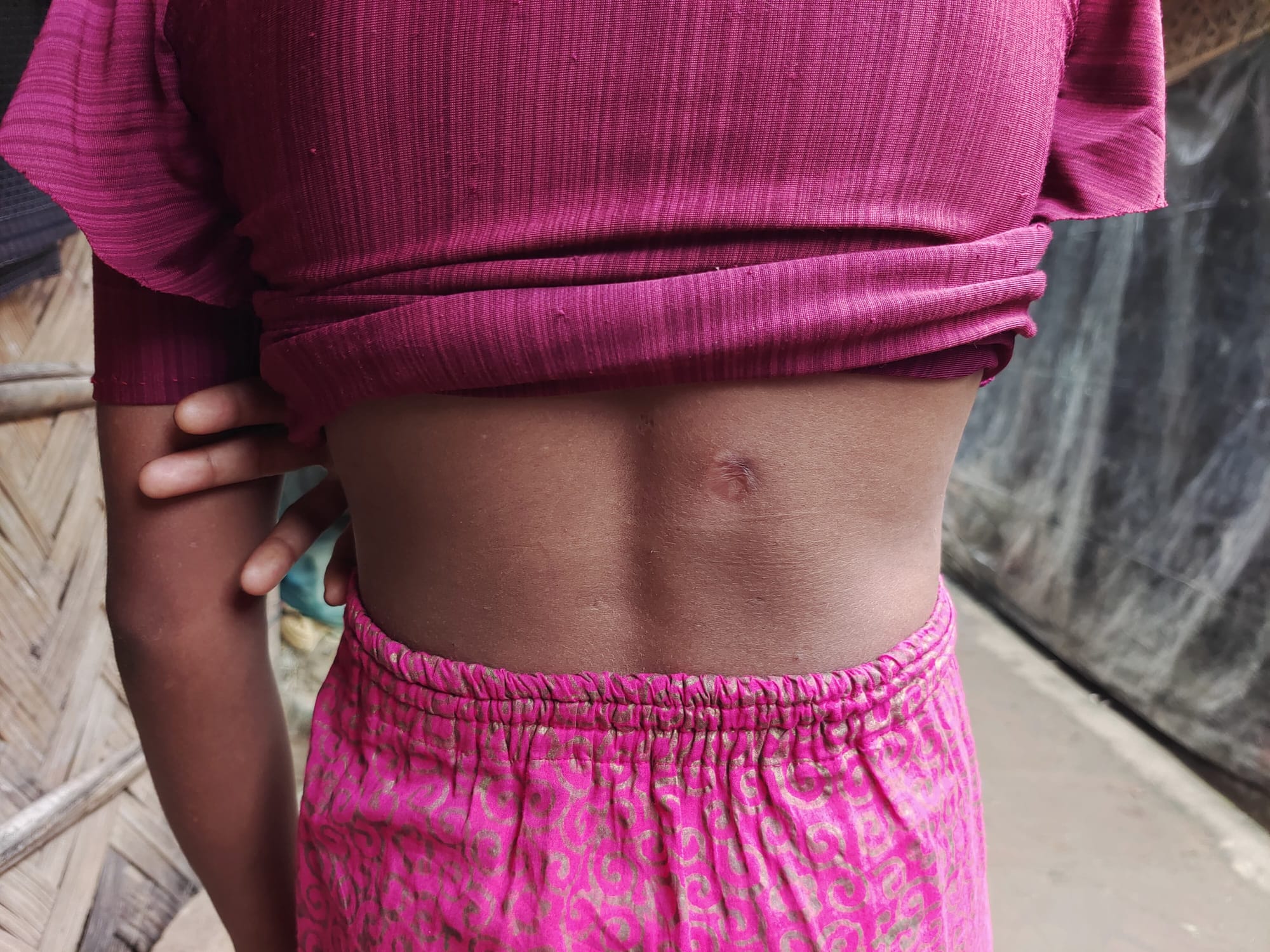Surviving a massacre in Myanmar

By Ahtaram Shin
The sun was setting over Tamay Chaung village in Rakhine State, Myanmar, when 10-year-old Robina Bi Bi heard the sound of explosions. Her father had gone to the paddy fields to bring the cattle home, and her mother was somewhere near the village. But that evening in October, life as she knew it was torn apart.
‘I ran towards the fields, looking for my father,’ Robina, a member of the Rohingya minority, tells me in an interview last month, her voice trembling. ‘When I reached there, I saw his body scattered on the ground. I froze. I couldn't believe it.’
Terrified, she turned back toward the village, only to find her mother’s lifeless body on the road.
In a matter of minutes, Robina's whole world had crumbled. Her parents were gone, and her home was no longer safe. Robina claims the attackers were from the Arakan Army (AA), one of the most prominent armed opposition groups challenging military rule in Myanmar. The AA has been accused of committing abuses against the Rohingya minority, forcefully conscripting youths and setting fire to homes.
In the chaos, Robina gathered her five younger siblings. The eldest, barely 15, clutched her hand. Together, they made the heart-wrenching decision to flee the only home they had ever known.
Robina and her siblings joined a group of villagers fleeing toward the Bangladesh border. With no clear destination, they walked through dense forests, surviving on the little food they brought with them. ‘We ran out of food after a few days,’ Robina recalls. ‘We were starving, but we had no choice but to keep moving.’
The group hired local Murung guides, paying them whatever money they had. The journey lasted a gruelling 10 days. Robina was also injured during the AA attack, a bullet lodged in her back, and the pain was excruciating.

‘I saw things no child should ever see,’ Robina whispers. ‘Children being burned alive. Bodies lying in the fields. The ground soaked in blood. It was like a nightmare I couldn’t wake up from.’
When they finally crossed into Bangladesh, the relief was overwhelming. But the reality of their situation quickly set in. Robina and her siblings were orphans, homeless and stateless.
The family now lives in a crowded shelter in Cox’s Bazar, the world’s largest refugee camp. Their elderly grandfather tries to care for them, but resources are scarce. The camp is a labyrinth of makeshift tents, and the air is thick with despair.
Robina spends her days helping her siblings and replaying the horrors of her escape. ‘I don’t want to go back to Myanmar,’ she says firmly. ‘They burned our dreams, killed our parents and made us stateless. There’s nothing left for us there.’
Her story is not unique. Described by the UN as ‘the most persecuted people in the world’, almost a million Rohingya Muslims were forced to flee Myanmar in 2017 after being targeted by the junta. Now the community faces violence from opposition groups as well as the military, with both accused of attacking Rohingya civilians amid Myanmar’s escalating civil war. In the last year alone, over 20,000 Rohingya have been killed in Rakhine State, where the AA has seized control of large areas from the junta.
Despite the scale of the violence, the world remains largely silent. International courts have issued rulings and arrest warrants against military leaders, but there is no enforcement, no justice. Robina’s story, like so many others, is a testament to the failure of global promises.
For the young girl, the future is uncertain. She dreams of going to school, but her immediate concern is survival. ‘I don’t know what will happen to us,’ she admits. ‘But I hope one day, someone will hear our voices and help us find a place where we can live in peace.’
— Ahtaram Shin (@ahtaramshin)
📰 Read NI532: Courage and Terror in Myanmar — free to Currents subscribers!
👉 Follow Rohingyatographer, a collective of award-winning Rohingya photographres documenting life in the world's largest refugee camp
🎧 Listen to an interview with Maung Moe, a Rohingya journalist, about his documentary Along the River and the situation for displaced Rohingya along the Thai border
Like what you've read? Support us with a tip.
Are you a freelancer? Pitch us a story.
Looking for more? Listen to our podcast The World Unspun
Subscribe to New Internationalist magazine and get Currents absolutely free!

